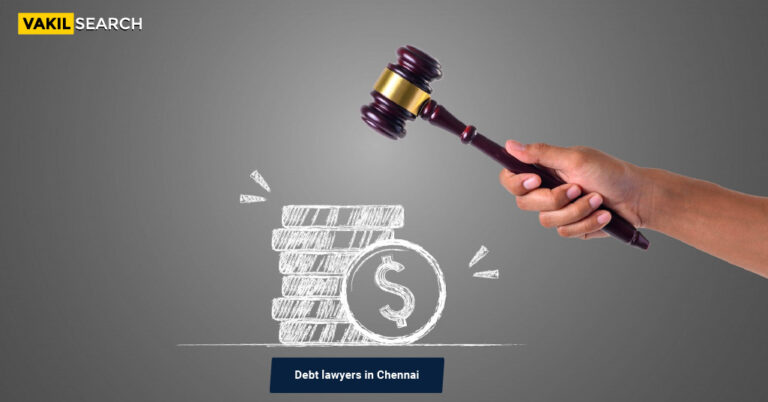In this article we look into the formation of debt recovery tribunals and how they operate.
Introduction
The financial market is the backbone of the economy. It bridges the gap between the economic aspirations of the nation and its financial capacity. Till the 1990s most of the banks and financial institutions, that constitute the majority of the financial market, were all nationalized institutions which means they were not-for-profit, utilitarian organisations. Since there was no profit motive involved, the checks that had been put in place for risk assessment and eligibility criteria for approving credit facilities were strictly adhered to.
However, once the economy opened up post the ‘90s and private banks began arriving in the market, the entire dynamics of the market changed drastically. This once non-competitive market became a highly competitive market. Banks began pushing credit-based products heavily, enticing customers to take loans for the smallest of things by making it seem easy to avail of loans.
Almost everything is bought on credit now. The principle of modern-day credit is to utilise the facility only to ease the loss of liquidity. Instead of paying a lump sum for a product, the pays the amount spread over a few months, thus keeping his monthly liquidity a little more stable. However, since there are not many checks when issuing credit, many people take advantage and utilise their credit facilities when they don’t have ready money to repay the credit. They bank on future inflows of cash, which can be uncertain. And if the uncertainty comes into play then this leads to a default in the repayment of credit. The effect of defaults can corrode the entire market and cause a crash of the entire economy.
In order to address this issue, the government enacted the Recovery of Debts Due to Banks and Financial Institutions Act (“RDDBFI”) 1993. Under this act, a provision was made for the formation of two regulatory bodies called the Debt Recovery Tribunal (DRT) and the Debt Recovery Appellate Tribunal(DRAT) in india.
What Is a Debt Recovery Tribunal
Technically issuing a loan or a credit facility is a private transaction between two parties and the government has no say in such cases. Of course, there are provisions under the contract act, but for a financial institution to take each and every case to the courts would overburden the caseload of the courts. And if the caseload is too heavy, it might take a long time for the matter to get resolved, mounting up the costs. Many of these debts would be easier to write off. But if each individual financial institution begins writing off debts rather than trying to recover their debts then the overall impact on the economy can be substantial.
The DRT and DRAT were introduced to exclusively look into this aspect of the law. Initially after the act was passed, within a little while it was learned that the formation of such a body was unconstitutional and was struck off. Later, the supreme court made recommendations to the central government with regards to the changes that need to be made to the act to make these bodies constitutional. The government enacted the changes and the existence of DRT and DRAT was legitimised.
Usually the DRT consists of only one member, called the ‘Presiding Officer’ (PO). The PO is appointed by the central government for a term of five years or up to the age of 62, whichever comes earlier. The rank of the PO is considered to be at the same level as a district judge.
This officer hears the dispute from the relevant parties. In the DRT one does not need to engage a lawyer in order to make their arguments. They can do so themselves. The PO then passes judgement and orders the course of action that must be followed. The order of the PO is legally binding.
Of course, if someone wants to appeal the judgement of the PO they can do so by appealing at the DRAT.
How Does a Debt Recovery Tribunal Operate
A DRT can be approached by any bank or financial institution to initiate proceedings for default on loans that are greater than ₹ 10 lakhs in value. Amounts lower than that have to be pursued at the civil court level and follow the Civil Procedure Code. There are two ways to approach the DRT.
Application Route – Under this route, the bank or financial institution can file an application with DRT as laid down under the Recovery of Debts Due to Banks and Financial Institutions Act by submitting the form at the DRT. The form has to be filed at the DRT under whose jurisdiction the defaulter resides or conducts business.
SARFAESI Route – SARFAESI stands for Securitisation and Reconstruction for Enforcement of Security Interest Act (SARFAESI), 2002. This act is meant for secured loans and credit. When it comes to secured loans, the chances of defaults are fairly less as the debtor has put forward collateral for the purpose of acquiring the loan. So in the event of a default, the creditor confiscates the collateral asset to settle his or her debt. But if under some circumstances, the collateral fails to recover the full amount of the debt and the shortfall is substantial, then the creditor can approach the DRT under the provisions of this act.
Post-application Procedure – The DRT can issue an interim order against the borrower to stop him or her from disposing off any property. The interim order will freeze all assets of the borrower for the period of the proceedings. The DRT also reserves the right to detain the borrower for a period of three months of there is any misdemeanour on the part of the borrower or if he or she proves to be a flight risk
With the normal application procedure under the RDDBFI act, the DRT is required to expedite the case within 180 working days. However, if the DRT has been approached through the SARFAESI Act then the proceedings have to be expedited within 60 – 120 days. Any delay beyond this timeline gives the parties the power to go to the DRAT to dispose of the case.
As soon as the application is filed, a summons is sent to the defendant allowing him to respond within thirty days in writing. The PO may choose to grant an extension to the defendant if the defendant requests so. The defendant can also choose to take counter-action against the bank or the financial institution.
Once the proceedings are over, the PO will issue a certificate to the debt recovery officer which will contain the attachments to the debt that can be liquidated to settle the debt.
Conclusion
The regulations for the financial markets are very extensive and exhaustive. They have been put in place to protect the all-too-important financial markets. These regulations have been framed from a bird’s eye view of the markets and hence may not always be comprehensible at first sight. But a financial expert, who has studied these markets and their regulations as a subject matter, may be able to guide and enlighten you regarding the dynamics of the market. If you have any such doubts or queries regarding matters of the financial market, get in touch with Vakilsearch today and we will connect you to the right expert who can answer your queries and clear your doubts.
Also Read:








